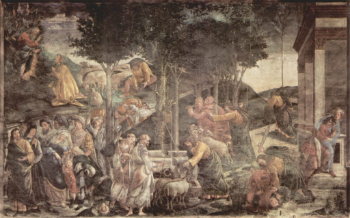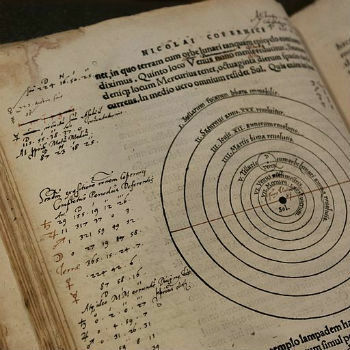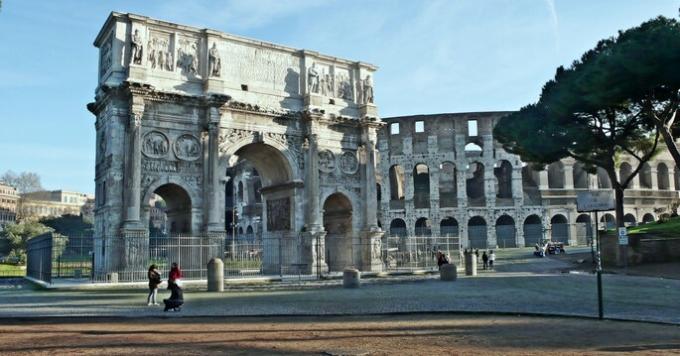Sandro Botticelli (1445-1510) was an Italian Renaissance painter and draughtsman.
He is considered one of the most recognized and acclaimed painters in Italy and was even invited to participate in the works of the Sistine Chapel in Rome.
Botticelli is the author of important works such as: The spring, The born of Venus and the Adoration of the Magicians.
Biography
Alessandro di Mariano Vanni Filipepi was born in Florence on March 1, 1445. The youngest of five children, was nicknamed by an older brother Sandro Botticelli, which means "small barrel of wine".

Recognized for his wit and speed, Sandro was the son of a tanner. He received training as a goldsmith, but worked very early in the studio of the Florentine Renaissance painter Fra Filippo Lippi (1406-1469) in Florence, of whom he was a disciple.
The style of Lippi, one of the most important painters of the time, is evident in most of Botticelli's work.
Through Lippi, Botticelli learned the technique of linear perspective and the use of pale and resonant colors widely used in the Renaissance's works.
He was also influenced by Antonio Pollaiuolo (1433-1498) and Andrea del Verrocchio (1435-1488) in 1460.
Restless and quick, Botticelli opened his own workshop when he was just 25 years old. There, he applied the neoplatonism– of Platonic influence – bringing together pagan ideas in figures belonging to Christianity.
He had many apprentices who completed his work and thus had the ability to produce on a large scale.
Sadness and melancholy were the hallmarks of his work. In many of his paintings, the female figure is depicted imposingly.
The works seduced the important and influential Medici family, from whom he received funding and large sums of money.
Through the Medici he was invited by the Papacy to participate in the painting of the Sistine Chapel. He carried out the work together with artists such as Pietro Perugino (1446-1523), Domenico Ghirlandaio (1449-1494) and later Michelangelo (1475-1560).
Seven papal portraits and three areas were painted by Botticelli's hands. He was a victim of persecution by the Church and had many paintings considered wicked burned at the stake.
The same fate befell the friend who influenced him in his old age, the monk Girolamo Savonarola (1452-1498). He was burned at the stake for his impetuous speech dealing with the wrath of God.
Death
Sandro Botticelli died on May 17, 1510 in his hometown. The artist died poor and run over by the popularity of his contemporaries as Michelangelo, Rafael Sanzio and Leonardo da Vinci.
He left unfinished the paintings that portrayed the “Divine Comedy", in Dante Alighieri. However, his work was rediscovered and today he is considered one of the main exponents of the Renaissance.
Learn about the Italian Renaissance:
- Renaissance: characteristics and historical context
- artistic renaissance
- Renaissance Artists
Main works and characteristics
The Spring (1481-1482)

The spring or Allegory of Spring it is considered the greatest mythological painting of the Renaissance. According to historians, the work was commissioned to Botticelli by the Medici family to give as a gift to a bride.
It is a painting of a humanistic character and most art historians consider that the central theme reflects love and marriage. In addition, he covers topics such as sensuality and fertility.
Botticelli completed the painting in 1482, using the tempera technique on a canvas measuring 203 x 314 cm. The painting is on display at the Galleria degli Uffizi in Florence.
The Birth of Venus (1484-1486)
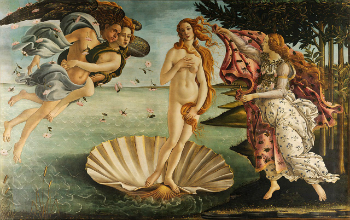
The born of Venus it is considered one of the most precious works of the Renaissance.
In a picture of incredible delicacy, the goddess Venus (known as Aphrodite in Greek mythology) emerges from the sea on a shell. This event was in line with the myth which explains her birth.
Botticelli pictured its bark being pushed to shore by winds produced by the wind god amid a shower of roses.
And as the goddess Venus is about to set foot on the earth, a nymph reaches out to cover her with a cloak.
The nude of Venus is a mark of the Renaissance in Botticelli, since until this time, nude women had almost never been portrayed.
The pose of Venus is an allusion to the Venus de Medici, a marble sculpture studied by Botticelli. A work of classical antiquity, it belonged to the collection of Leandro de Medici.
The Florentine painter tried to demonstrate movement throughout the scene, in the curls of the goddess's hair, in the leaves of the trees, in the wind and waves.
Botticelli prepared the pigments with little fat and used a new technique for the time, spreading an egg layer over the work.
The work was completed in 1486, portrayed on a canvas 172.5 centimeters high by 278.5 centimeters long using the tempera technique. It is also on display at the Galleria degli Uffizi in Florence.
Adoration of the Magi (1485-1486)

The work Adoration of the Magicians it was a peculiar order of the Medici family. In painting, Botticelli reproduces several family members, as well as friends and himself.
The scene shows the Medici represented as the wise men who visited Jesus shortly after his birth.
One of the kings touches the child's foot in Mary's lap. Unlike the bucolic scene depicted in the Bible, Botticelli's painting depicts a larger group of visitors.
According to historians, this would be the solution to fit all Medici members and friends in the visit to Jesus.
On display at the Galleria degli Uffizi, in Florence, the dimensions of the work are 111 x 134 centimeters, reflecting the oil on canvas technique.
Sistine Chapel
Alongside the greatest painters of the Renaissance, Botticelli produced several frescoes for the Sistine Chapel in the Vatican. The main themes were based on scenes from the Old and New Testaments. This work was produced between the years 1481 and 1482.
In addition to the portraits of 24 popes drawn by him, Ghirlandaio and Fra Diamante, Botticelli painted some frescoes:
The Punishment of Korah, Dathan and Abiram
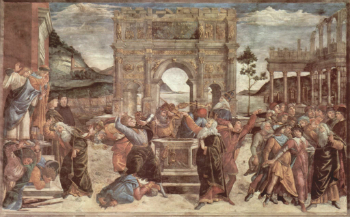
Temptation of Christ and the Purification of the Leper

Scenes from the Life of Moses
